Updated: April 10, 2025- 13 min read
Good data is essential for making informed product-related decisions. Many organizations have adopted modern agile or lean methodologies to stay ahead of the competition and meet customer needs. This involves constantly building, testing, and iterating.
Product Managers can access various data sources and use sentiment analysis of customer feedback to gain a 360-view of performance. That's why choosing and sticking to the right data-driven strategy is crucial for better efficiency.
Data for Product Management: Collection and Analysis
Data collection and analysis start by defining key performance indicators (KPIs). Most commonly in Product, these KPIs include customer satisfaction, retention rate, and conversion rate. Once the product is released, data is collected through various sources such as surveys, user interviews, and website analytics.
Many companies use the Build-Measure-Learn (BML) framework. By building a product and measuring consumer metrics, the company can better respond to customers' needs and improve the product for long-term sustainability.
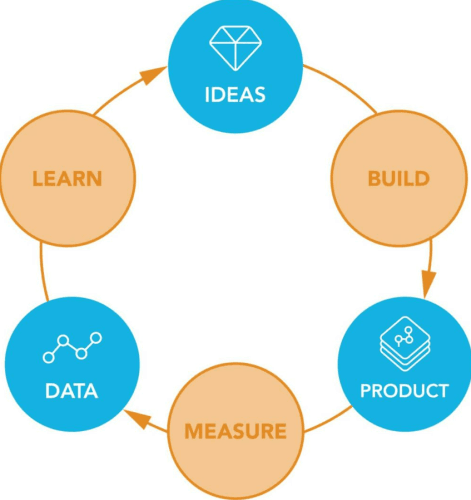
Based on the data gathered from measuring customer metrics (user engagement, retention, and satisfaction), the Product Team can learn how to respond better to customer needs and improve the product. This may involve changing the product design or adding new features that customers have requested.
The ultimate goal of analyzing is to create a product that meets customers' needs while reducing the effort spent on features that customers don't value. It's crucial to understand your consumer base from the outset.
Types of Product Management data
Product Management requires data from several channels: user data, product data collection, and market research. User data helps you understand customers to build a successful product. Product data lets you find out what's happening inside the product. Market research enables you to understand competitors.
Some user metrics to consider are
Net Promoter Score (NPS), which quantifies customer satisfaction with the product;
Retention Rate, which tracks the percentage of active users compared to total users for a specific period;
Churn Rate, which is the percentage of customers that leave a company or unsubscribe from a platform within a specific period
Customer Acquisition Cost (CAC), which measures how much it costs to acquire a new customer;
Lifetime Value (LTV) counts how much revenue a customer generates over their lifetime;
Monthly Recurring Revenue (MRR) estimates how much recurring customers generate monthly income.
Product data can refer to a wide range of information, including
Pricing data, strategies, discounts, and promotions;
Sales data to identify trends and forecast future demand;
User flows to provide insight into how users navigate a product and highlight areas of confusion or difficulty;
Bounce rates to measure the percentage of visitors who leave a website without taking any action;
Heatmaps to identify areas of interest and potential improvements.
Market research for new product development can focus on different areas, such as:
market viability;
product and features demand;
the most effective way to position;
pricing policy;
ways to communicate and market your product.
Data challenges of a Product Manager
Data-driven Product Management comes with challenges that need to be identified and mitigated. One of the most significant risks is relying solely on one "north star" metric, which can lead to missing important information. Additionally, misinterpreting or over-weighting a single piece of data can lead to inaccurate conclusions. It's essential to interpret each amount of data in its proper context. It's crucial to incorporate data at all product development phases and focus on suitable data types to minimize such risks.
Using intelligent tools and processes to gather and analyze data accurately is also important. Finally, taking a step back and seeing the big picture from a human perspective can help avoid tunnel vision and ensure the product meets real user needs. Product Managers can effectively leverage data to drive their products forward by identifying and addressing these risks.
Using Data to Make Better Product Decisions
When making product decisions, starting with good data is imperative. The Product Manager can use data-driven decision-making to guide strategic business actions that align with goals, objectives, and initiatives by using facts, metrics, and data. But how do you ensure that you have good data to work with?
First, gathering data from multiple sources, including user feedback, customer support tickets, and analytics tools, is essential. This data should be clean, timely, and accurate, removing duplicates, errors, or inconsistencies. Structured data, such as database records, can be easier to work with, but unstructured data, such as customer feedback, can provide valuable senses that might be missed otherwise.
To improve product decisions, utilizing data is a continuous process. Let's dive into additional stages of data-oriented Product Management.
Identifying patterns and trends
Identifying patterns and trends involves analyzing data to discover recurring tendencies that can inform product development. It's essential to choose the suitable algorithm and technique for your particular type of data and analysis. The choice also depends on the specific problem you are trying to solve. However, human-centered design practices and machine learning can help plan product experiences.
Advanced Product analytics uses predictive modeling, machine learning algorithms, deep learning, and other statistical methods to analyze information. Using advanced analytics, you can provide flexibility and unique analysis capabilities to address specific issues or questions.
The concept of advanced analytics and BI solutions has evolved to provide a flexible and scalable architecture. This architecture enables business users to perform in-depth analysis tasks, from accessing integrated data from multiple sources to reporting and sharing. Such a self-service analytics approach allows business users, rather than data scientists, to gather, prepare, integrate, and analyze data, find patterns and trends, and apply them to strategic, operational, and tactical activities.
Empowering Product Managers to gather, prepare, integrate, and analyze data and apply findings to strategic, operational, and tactical activities help organizations cascade objectives and goals. With the ability to "discover" subtle factors, organizations can identify issues and patterns, capitalize on opportunities, and go beyond data monitoring.
Determining customer behavior
Customer behavior research involves analyzing data to understand how users interact with a product, what features they employ, and how they make purchasing decisions. By examining this information, PMs can make data-driven decisions about the product's strategy, design, and marketing. The more you understand your customers, the more accurately you can predict their wants.
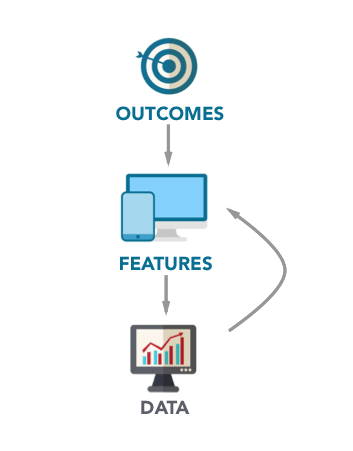
This process involves collecting and analyzing user data from various sources, conducting user research through methods such as focus groups or usability testing, and using the insights gained from the data analysis and user research to make informed decisions about the product. Continuously monitoring customer behavior and updating the product strategy accordingly is essential.
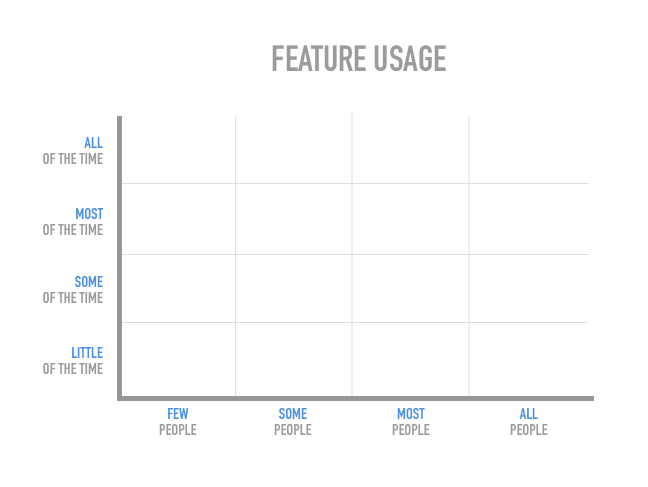
The feature audit. Source
Transactional and point-of-sale data, customer demographic data, and attitudinal data (through methods such as social media sentiment analysis via social media tools) are all valuable sources of information that can be used to gain insights about customers.
Managing personal data requires PMs to understand governance principles to comply with regulations and maintain customer trust.
Identifying areas for improvement
Improving a product or service involves analyzing customer feedback, user testing data, and other sources of feedback to identify common pain points. This analysis can inform decisions about the product roadmap, from strategy to feature prioritization.
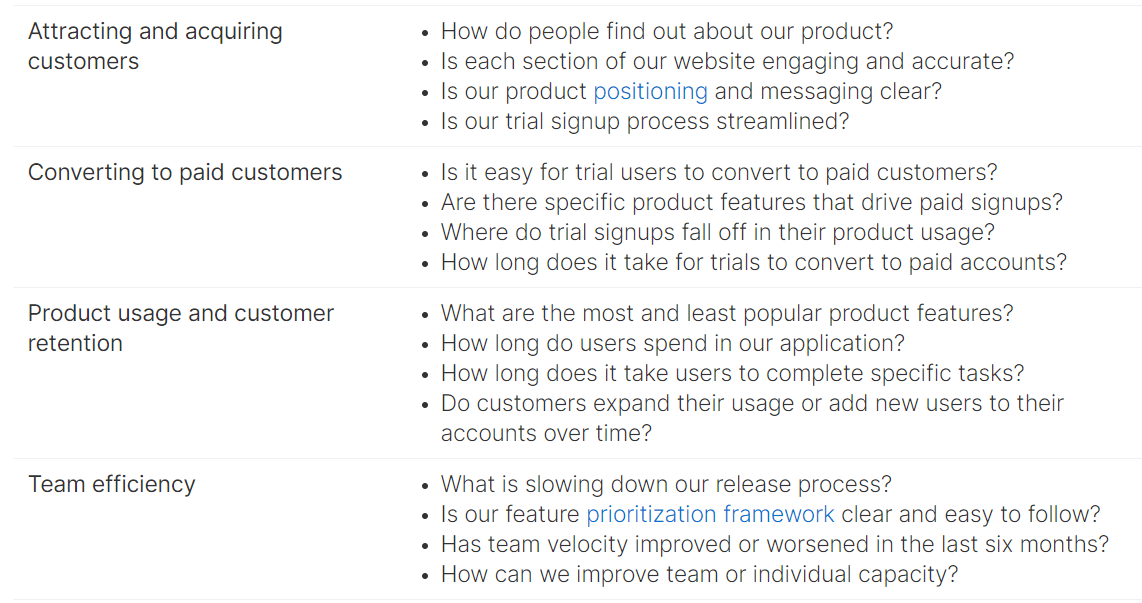
Questions for exploring the meaning behind Product Metrics. Source
Data-driven PM uses analytics models to predict and optimize outcomes. To identify areas for improvement, start by identifying a business opportunity and determining how the model can improve performance. This can be done by using product analytics tools to analyze customer touchpoints or by examining the customer churn rate to understand why customers leave. Tracking testing and defects can also help identify areas for improvement.
For example, if your website's bounce rate is high, don't assume visitors aren't interested in your content. Instead, analyze your website's design, layout, and user experience to pinpoint areas where visitors may get frustrated or confused. Addressing these pain points can improve the user experience and lower your website's bounce rate.
Creating data-driven roadmaps
Building data-driven roadmaps involves using data to prioritize product features based on factors such as customer needs, revenue potential, and feasibility within a given timeframe. This approach helps to make informed decisions and select features that will positively impact the business.
Roadmaps outline future product functionality and feature release dates, providing crucial context for agile development teams. It aligns development efforts with broader product and company goals, providing a strategic vision for all stakeholders.
For organizational leadership, roadmaps provide updates on progress and translate technical tasks into non-technical terms. For Product Owners and Managers, such plans unify teams and enable effective communication. For developers — it provides a clear understanding of the big picture, allowing them to focus on critical tasks.
Developing a successful product roadmap requires a scientific approach to data analysis and evidence-based decision-making. Product Managers must consider market trajectories, customer value propositions, strategic goals, and effort constraints. By prioritizing initiatives and epics based on these factors, they can create a roadmap that aligns with short- and long-term product goals.
By presenting the roadmap creatively and memorably, Product Managers can demonstrate their understanding of the company's strategic objectives and plan to meet customer needs.
Data-Driven Product Management: Best Practices
A data-driven Product Management approach must follow several directions to develop scalable and accessible offerings. These practices include:
Conducting market, customer, and competitor research. PM must understand the market landscape and customer needs to develop successful data products.
Mapping user personas and customer profiles. Creating detailed user personas helps Product Managers understand their target audience and tailor their products accordingly.
Defining metrics to track progress, setting KPIs and OKRs. To develop practical goals for a product team, it's essential to have access to the correct data and know how to interpret them. This is where the knowledge of data becomes crucial for product managers.
Skilled PMs can extract relevant information to identify SMART goals and OKRs that are specific, measurable, achievable, realistic, and time-bound. Setting clear metrics and objectives helps to track progress and make data-driven decisions.
Developing data pipelines to ensure all teams have the data they need. Building robust data pipelines helps ensure all teams can access the data they need to make informed decisions.
The large amounts of data can be overwhelming and inaccessible to team members without sufficient training, including senior stakeholders. That's why product managers must break down complex data into easy-to-understand, digestible chunks and present it, which can be accomplished using data visualizations.
Interpreting and presenting data in accessible ways. Product Managers must be able to analyze and present data in a way that is accessible and understandable to stakeholders.
As a PM, influencing stakeholders is a crucial aspect of the role, and objective data can be a valuable tool to achieve this goal. PMs can improve their chances of securing stakeholder approval by demonstrating how a product or feature can save time and money, increase adoption, or reduce churn.
Developing data-based business cases to influence stakeholders. It helps to gain buy-in from stakeholders and secure resources.
Promoting a data-driven mindset and data literacy within the organization. It helps create a culture that values data-driven decision-making.
Developing a data-driven product strategy. It helps product managers prioritize initiatives and align their data products with business goals.
Tracking product usage to identify areas for improvement. It is the most important practice. Businesses must continually satisfy customers' needs and adapt their products to exceed expectations. By leveraging this data, they can determine which functions drive value and create a roadmap that maps out the most efficient path to success for different user groups.
Creating and maintaining a successful product roadmap requires continuous effort from the team. It's essential to follow best practices, such as focusing on the necessary level of detail for your audience, balancing the roadmap between short-term tactics and long-term goals, and reviewing and making adjustments regularly to ensure success. Most Product Managers rely on a core set of metrics to guide their roadmap:
Daily Active Users (DAU)
Feature Usage (FU)Customer Acquisition Cost (CAC)
Net Promoter Score (NPS)
Customer Satisfaction (CSAT)
Customer Lifetime Value (CLV)
Repurchase Rate (RR)
Customer Conversion Rate (CCR)
User Churn (UC)
To ensure success, the organization must establish a standard definition of these metrics and calculate them uniformly across the entire organization.
By setting the right KPIs and metrics, monitoring progress, prioritizing impactful data, and emphasizing the importance of data-driven decision-making, you can create a culture of continuous improvement and drive better outcomes for your product and business. To direct your team toward achieving goals, you should follow these guidelines.
Tools For Data-Driven Decisions
Among the tasks of a Product Manager are funnel data analysis, NPS surveys, cohort analysis, usability testing, project management, and A/B testing. Each task requires specific instruments and techniques to gather data effectively, analyze results, and make informed decisions. Apart from Jira, Google Analytics, and SurveyMonkey, there are a lot of powerful tools that can help you drive growth with data insights.
Indicative
This Product Analytics platform connects directly to your data warehouse to provide actionable insights across the entire customer journey without SQL or writing a single line of code. One of the standout features of this tool is its multipath funnel, which allows users to identify critical behaviors and touchpoints that lead to customer acquisition. Additionally, Indicative's segmentation and cohort analysis tools enable users to ask essential questions about their customers and behaviors and to act on this information by optimizing marketing campaigns and product implementations.


Coupler.io
This data automation and analytics platform is designed to help businesses become data-driven by automating data manipulations, building live dashboards, and making various reports. Coupler.io enables users to blend data from more than 60 business applications and the ability to export data from Jira specifically.
It automates integration workflows and allows setting up schedules to import data hourly, daily, or monthly. With Coupler.io, you can make decisions based on new data, back up your app's information, and connect even more apps that support JSON API.
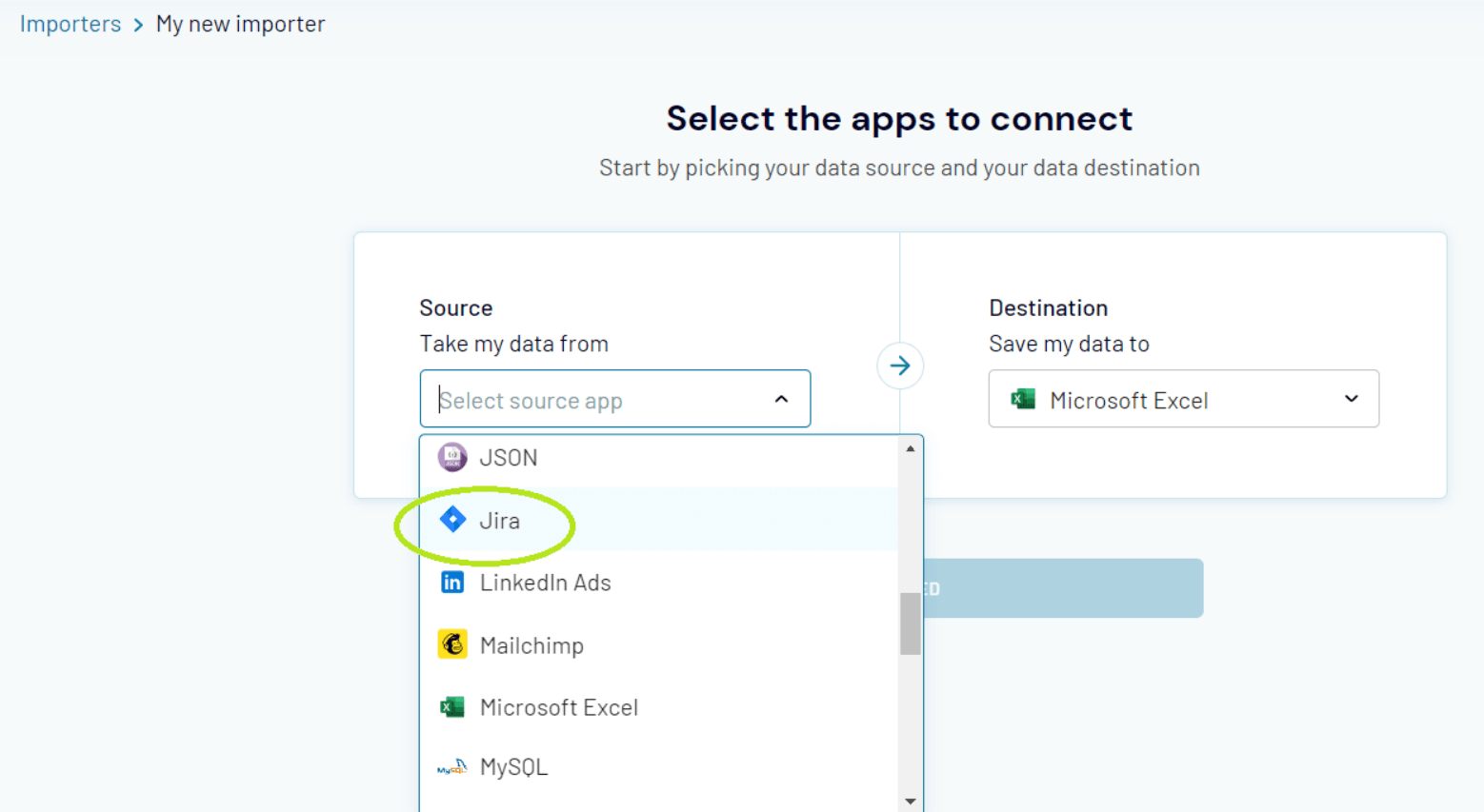

Tableau
Tableau is a data visualization tool that empowers users to access, analyze and visualize data efficiently. It helps users manage data, explore insights, and share their findings with others. Tableau's mission is to help people see and understand data, making it the most powerful, secure, and flexible end-to-end analytics platform available to analysts, data scientists, and business users.
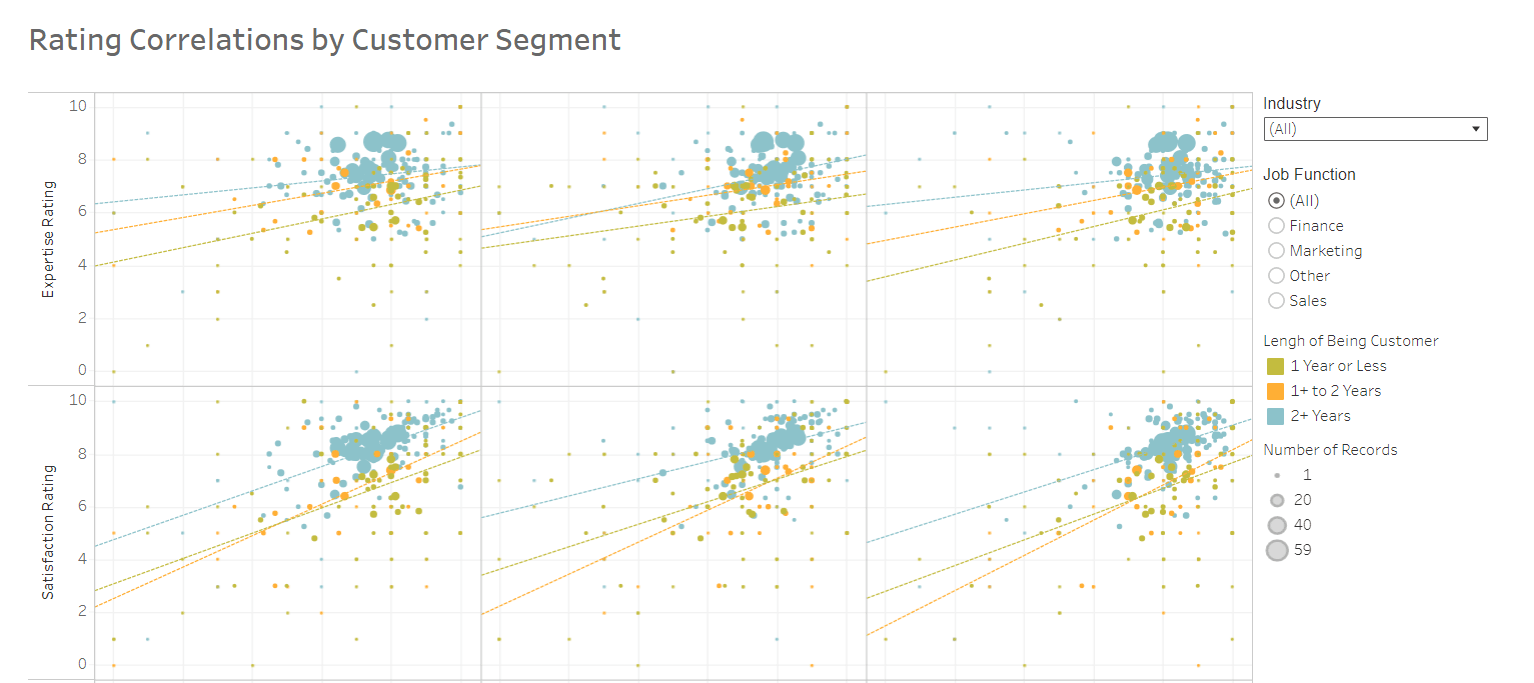

Conclusion
In conclusion, data-driven Product Management is fundamental to better product decisions. Such an approach helps companies to identify customer needs, understand behavior and pain points and optimize the experience. This, in turn, leads to higher user satisfaction, increased engagement, and better retention rates.
It's beneficial to establish a system for collecting and analyzing data and ensure that all team members and stakeholders understand the importance of this process. As you embark on your journey towards data-driven product management, it's crucial to prioritize the most impactful data points and avoid getting bogged down in irrelevant or low-priority data. By focusing on the metrics that matter most to your product and business goals, you can drive better outcomes and make informed decisions that propel your product forward.
To implement these rules, we encourage you to try data-driven Product Management. With these best practices in mind, you can create a culture of continuous improvement and drive better outcomes. So don't hesitate to try it and measure the results for yourself.
Updated: April 10, 2025





